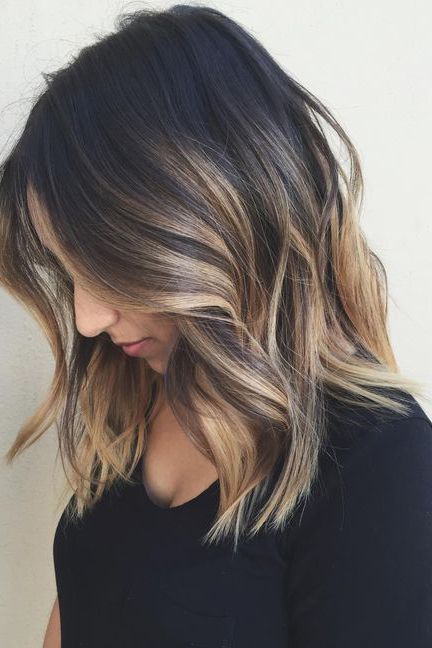Ready to get adventurous with your hair color? But the long list of the hair-color techniques is confusing. You can decide on the hair color technique by learning more about each of them. The most common and popular ones are listed
1. Ombre
The French term “ombre” means shaded. Technically, the ombré hair color and word description are a color reduction from dark to light or light to dark. It fades dye utilizes the normal hair color at the roots and combines at the ends of your hair with your preferred shade. If your natural hair color is at the base of your hair, you won’t have the high-maintenance touch-ups with other hair-coloring products that are available. From the celebrity models to the girl next door, the intensity of this amazing hair coloring phenomenon is bringing everybody in. Numerous celebrities including Alexa Chung, Lauren Conrad, Nicole Kidman, and Beyoncé have followed the trend.

2. Somber
A sombré is a subtler variant of ombré hair color, which transitions between two tone-closer colours. The difference between roots and tip color is only one or two shades apart, and the color seems more smoothly blended together. This design is very low-maintenance, convenient to care for and needs less trips to the salon.

3. Ombré highlights
Instead of a complete ombré, ombré highlights are a more discreet choice where the technique of fading color is introduced to just small sections of the hair.

4. Balayage
Balayage is a French term that means “to brush” or “to paint,”‘ In this technique hair color is applied onto the hair to produce a graded, more natural-looking highlight effect, the color is hand-painted on the hair as opposed to the old school highlighting techniques of foils and cap highlighting. The free-hand implementation enables a more realistic and contemporary look to be accomplished through slight transitions between the hues selected, whether blonde, brunette, red, or artificial. This ensures that the finished look is less stripy than previous highlights, yet maintaining the same glorious aspect and enjoyable color.

5. Reverse Balayage
The balayage strategy may be used as a reverse balayage as well. Rather of beginning at the base of the hair with a darker hue, a reverse balayage begins with a brighter color and gradually transitions to dark.

6. Dip dye
Dip dye is a popular two-tone coloring method, in which the hair at the roots of light ends becomes dark. This is quite the color of the statement because there is no clear blend of two colors. This includes dipping the hair ends into the dye. The dye used may either be a natural colored dye or a bright colored dye.

7. Highlights
Highlights are hair sections colored a brighter hue to raise the hair strands’ level of brightness. The original “highlight process” developed in the 60s used plastic caps, through which hair locks were pulled with a hooked needle and isolated for bleaching. Instead, in the 80s, the foiling process was adopted, where slices of hair are coated with bleaching mixes and tucked onto strips of foil. While the process of highlighting has evolved over time, it still remains one of the most popular services sought in salons today. The coloring method was the initial means of creating sun-kissed tresses and helping to give the hair a multi-dimensional influence.

8. lowlights
Highlights are colored or bleached sections that are lighter than your natural hair color or base hair color, while lowlights add darker shades to create contrast instead of lightening the hair and let the base color be the start of the show. Lowlights do the reverse of highlights by creating depth to the hair and enhancing dimension.

Want to know how take care of hair fall or organic hair care routine , keep following our beauty section.